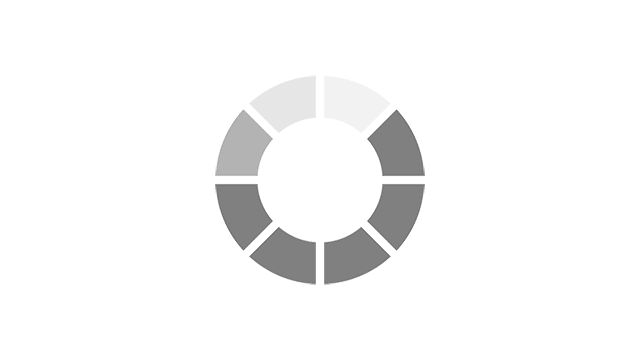
In pooled data from the Phase 3 SKYLIGHT trial program, the most frequently reported adverse reactions (≥ 2% and greater than placebo) with fezolinetant 45 mg included headache (8.2%), upper respiratory tract infection (URTI; 7.7%), COVID-19 (6.1%), arthralgia (3.2%), diarrhea (3.2%), back pain (3.1%), insomnia (3.0%), urinary tract infection (UTI; 2.9%), and alanine aminotransferase (ALT) increase (2.8%).
Table 1. Most frequently (≥ 1% in either group) reported treatment-emergent adverse events (TEAEs) in the safety analysis seta; pooled data from SKYLIGHT 1, 2, and 45
Preferred Term, n (%) | Placebob | Fezolinetant 45 mg Totalc |
|---|---|---|
Headache | 73 (7.7) | 90 (8.2) |
URTI | 78 (8.2) | 85 (7.7) |
COVID-19 | 39 (4.1) | 67 (6.1) |
Arthralgia | 25 (2.6) | 35 (3.2) |
Diarrhea | 23 (2.4) | 35 (3.2) |
Back pain | 16 (1.7) | 34 (3.1) |
Insomnia | 15 (1.6) | 33 (3.0) |
UTI | 22 (2.3) | 32 (2.9) |
ALT increased | 9 (0.9) | 31 (2.8) |
Nasopharyngitis | 24 (2.5) | 27 (2.5) |
Nausea | 19 (2.0) | 27 (2.5) |
Hypertension | 22 (2.3) | 26 (2.4) |
Fatigue | 21 (2.2) | 26 (2.4) |
Hot flush | 12 (1.3) | 24 (2.2) |
Blood creatine phosphokinase increased | 3 (0.3) | 23 (2.1) |
Blood alkaline phosphatase increased | 21 (2.2) | 16 (1.5) |
Gamma-glutamyl transferase increased | 12 (1.3) | 16 (1.5) |
Abdominal pain | 6 (0.6) | 20 (1.8) |
Aspartate aminotransferase increased | 2 (0.2) | 17 (1.5) |
Weight increased | 10 (1.1) | 8 (0.7) |
aAll randomized participants who took at least one dose of study intervention.
bPlacebo includes 175 participants from SKYLIGHT 1 and 167 participants from SKYLIGHT 2 who received placebo for 12 weeks, and 610 participants who received placebo for 52 weeks in SKYLIGHT 4.
cFezolinetant 45 mg Total includes 151 participants who received fezolinetant 45 mg for 40 weeks (re randomized after Week 12 from placebo to fezolinetant 45 mg for the active treatment extension period in SKYLIGHT 1 and 2), and 949 participants who received fezolinetant 45 mg for 52 weeks in SKYLIGHT 1, 2 and 4.
Table 2. Overview of TEAEs in the safety analysis seta; pooled data from SKYLIGHT 1, 2, and 45
n (%) [rateb] | Placeboc | Fezolinetant 45 mg Totald |
|---|---|---|
TEAE (overall) | 526 (55.3) [95.8] | 692 (62.9) [75.9] |
Serious TEAE | 15e (1.6) [2.7] | 45f (4.1) [4.9] |
TEAE leading to withdrawal of treatment | 37 (3.9) [6.7] | 47 (4.3) [5.2] |
Drug-related TEAE | 140 (14.7) [25.5] | 171 (15.5) [18.7] |
Drug-related serious TEAE | 1g (0.1) [0.2] | 4h (0.4) [0.4] |
Drug-related, leading to withdrawal of treatment TEAE | 24 (2.5) [4.4] | 31 (2.8) [3.4] |
Death (unrelated to treatment) | 0 | 1 (0.1) [0.1] |
aAll randomized participants who took at least one dose of study intervention.
bExposure-adjusted incidence rate per 100 participant-years.
cPlacebo includes 175 participants from SKYLIGHT 1 and 167 participants from SKYLIGHT 2 who received placebo for 12 weeks, and 610 participants who received placebo for 52 weeks in SKYLIGHT 4.
dFezolinetant 45 mg Total includes 151 participants who received fezolinetant 45 mg for 40 weeks (rerandomized after Week 12 from placebo to fezolinetant 45 mg for the active treatment extension period in SKYLIGHT 1 and 2), and 949 participants who received fezolinetant 45 mg for 52 weeks in SKYLIGHT 1, 2 and 4.
eEach occurring in only one participant.
fEach occurring in one participant except for abdominal pain (n = 2), chest pain (n = 3), COVID-19 (n = 2), colon cancer (n = 2), and endometrial adenocarcinoma (n = 2).
gGamma-glutamyltransferase and transaminases increased.
hHepatotoxicity (n = 1), ALT increased (n = 1), liver function test abnormal (n = 1), and endometrial adenocarcinoma (n = 1).
Johnson KA, Martin N, Nappi RE, et al. Efficacy and Safety of Fezolinetant in Moderate to Severe Vasomotor Symptoms Associated With Menopause: A Phase 3 RCT. J Clin Endocr Metab. 2023;108(8):1981-1997. https://dx.doi.org/10.1210/clinem/dgad058.
Lederman S, Ottery FD, Cano A, et al. Fezolinetant for treatment of moderate-to-severe vasomotor symptoms associated with menopause (SKYLIGHT 1): a phase 3 randomised controlled study. Lancet. 2023;401(10382):1091-1102. https://dx.doi.org/10.1016/s0140-6736(23)00085-5.
Neal-Perry G, Cano A, Lederman S, et al. Safety of Fezolinetant for Vasomotor Symptoms Associated With Menopause: A Randomized Controlled Trial. Obstet Gynecol. 2023;141(4):737-747. https://dx.doi.org/10.1097/aog.0000000000005114.
VEOZAH [package insert]. Northbrook, IL, USA: Astellas Pharma, Inc. Available at: https://www.astellas.com/us/system/files/veozah_uspi.pdf.
Kagan R, Cano A, Nappi RE, et al. Safety of Fezolinetant for Treatment of Moderate to Severe Vasomotor Symptoms Due to Menopause: Pooled Analysis of Three Randomized Phase 3 Studies. Adv Ther. 2024. https://dx.doi.org/10.1007/s12325-024-03073-8.
The medical information on this website is for educational purposes only and is intended to provide scientific information about Astellas products. This information is not intended as medical advice or clinical recommendations. This website is for use only by United States residents and licensed healthcare professionals (HCPs) practicing in the United States. Product labeling may vary between countries.
Please choose an option that best describes you:
For visitors outside the United States: click here